The online notebook for writing and learning science
LabNbook allows high school and university students to collaboratively produce and manage scientific writings: laboratory notebooks, reports, etc. The students’ workspace is structured by their teachers. The platform integrates scientific production tools – texts, drawings, experimental protocols, data tables with graphs and modelling – as well as communication and monitoring tools for students’ activities.
We have designed LabNbook to be a support environment for a variety of teaching methods: practical work, problem-based learning, project-based teaching, etc. One of the original features of LabNbook is that it differentiates between the roles of “student” and “teacher”. The platform allows students to perform collaborative work, combining face-to-face and remote work, synchronous and asynchronous. LabNbook gives teachers the possibility to build their activities and to accompany their students efficiently, while preserving their pedagogical creativity.

LabNbook is a free software under AGPL license developed at the Université of Grenoble Alpes.
It has been tested on a large scale in Grenoble’s higher education system and is used at the IUT, licence, master and engineering school levels.
LabNbook is constantly evolving, improving and completing itself, notably thanks to the contributions of its users.
A teaching sequence with LabNbook
1. The teacher structures the students’ workspace through a “mission”
The teacher creates a “mission” for each project or practical session: he/she writes the instructions, provides the necessary documents to the students (resources), gives a structure to the report they will have to write. A report can be structured, for example, by integrating content that the students have to complete.
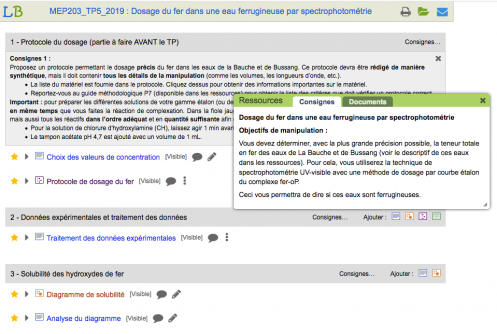
2. The teacher registers the student teams for the assignment
The teacher composes the teams of students who will work on the assignment. The teacher can also let the students register themselves. The assignment is then ready for the students to start: the students in a team share a single report, accessible online from a computer.
3. Students collaboratively write their report with specialised tools
LabNbook includes tools for creating “LabDocs”, the documents that make up a report. Currently, four tools allow the shared writing of four types of LabDocs, including two innovative pedagogical tools for science learning.
- A tool for writing structured experimental protocols
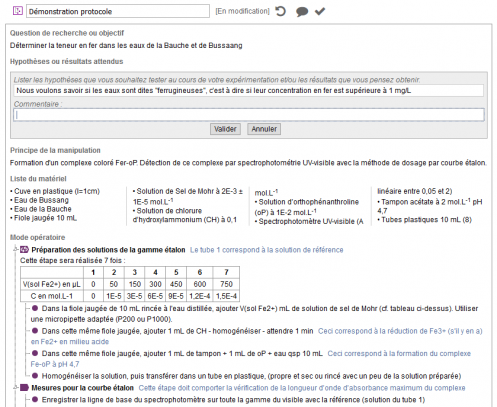
- A tool for processing experimental data with visualization on an XY graph and modeling by parameterized mathematical functions

The other two tools, less specific to science, are:
- A classic web word processor. We have equipped it with a powerful equation editor but adapted to all levels of students (WISIWIG and LATEX)
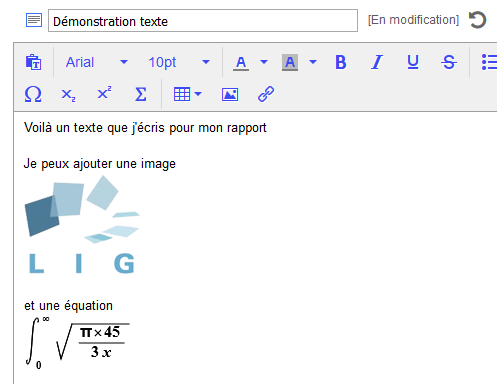
- A drawing tool adapted to experimental work. For example, it offers predefined elements for drawing experimental set-ups; it is also possible to incorporate an image for annotation, for example a photo taken with a microscope
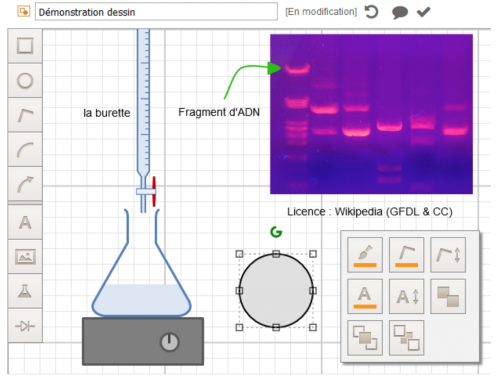
Students can supplement the resource materials and have tools to communicate with each other and with teachers.
4. The teacher monitors the work of his/her students and communicates
The teacher monitors the work of his or her students in real time or off-line.
- A dashboard gives the teacher an overview of the activity of all student teams in a class on an assignment. Various indicators are calculated on each report, such as the number of documents produced, production time, consultation of resources and annotations, etc.
- The teacher can easily communicate with his students by chat or email.
- The teacher can monitor the work of a team of students by viewing their report at all stages of production. He/she writes personalised feedback directly in the report with an original annotation tool. He/she can also drop a new LabDoc into the report or attach a new resource. However, to maintain privacy, students have the choice to show or hide their LabDocs from the teacher.
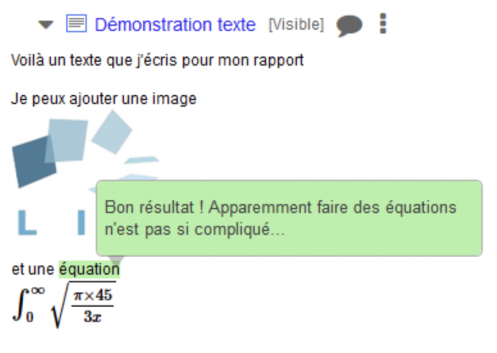
To learn more about the epistemological elements that governed the design of the platform: d’Ham C., Wajeman C., Girault I., Marzin-Janvier P. (2019). LabNbook, plateforme numérique support des pédagogies actives et collaboratives en sciences expérimentales. Actes de la conférence EIAH, Paris, France, 4-7 juin 2019.
